Come to Palestine
Ze’ev Raban
1929
Image

Engage with this Source
Creator Bio
Ze’ev Raban
1890–1970
The painter and decorative artist Ze’ev Raban (originally Wolf Rawicki) was born in Łódź, where he initially studied art; he continued his training in Munich and Brussels, where the influence of art nouveau was then at its zenith. He settled in Jerusalem in 1912 and joined the faculty of the Bezalel School of Arts and Crafts; most of the objects produced in its workshops between 1914 and 1929 were of his design. His style combined elements of art nouveau with motifs from traditional Syrian and Persian art. In addition to his striking and erotically charged art-nouveau works on biblical themes in a Jewish secular-national and Zionist vein, Raban also created the decorative elements for such well-known Jerusalem buildings as the King David Hotel and the YMCA, and designed a wide variety of everyday objects, including playing cards, banknotes, tourism posters, jewelry, commercial packaging, and Zionist insignia.
You may also like
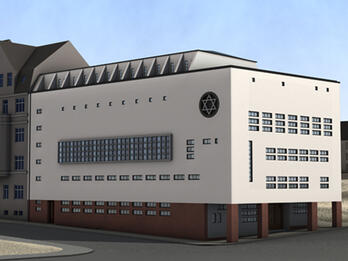
Reform Synagogue, Plauen
This modern synagogue in Plauen (in the Saxony region) was one of the few synagogues built in Germany in the economically turbulent years of the Weimar Republic. Jews and non-Jews contributed funds…
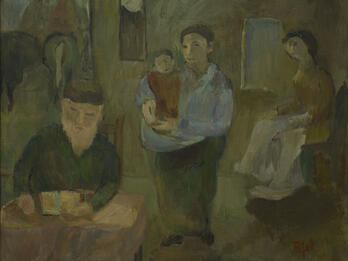
Family Reunion
Painting in an expressionist style, Tofel was involved in the Jewish Art Center in New York (1925–1927) that held exhibitions on Yiddish culture. He was also active in a group of American Yiddish…
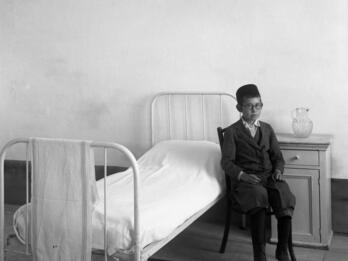
Diskin Orphanage, Jerusalem
Bassan is particularly well known for his photographs of the Old Yishuv, the community of Jews established well before the arrival of Zionist pioneers. He was the first Jewish photographer born in…
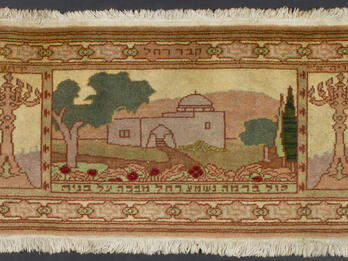
Carpet Depicting Rachel’s Tomb
This carpet was one of the many decorative objects with biblical themes produced at the Bezalel School of Arts and Crafts. This design features the legendary burial site of the biblical matriarch…

Teacher and Students in a Heder, Lublin
This photograph of a heder, a traditional Jewish boys’ elementary school, has become an iconic photograph of pre-World War II Jewish life in Eastern Europe. The heder was often a one-room classroom…
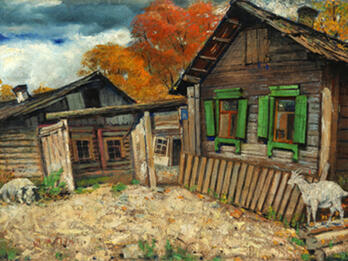
The House with a Goat
This bucolic, and clearly romantic, scene of a humble home in a shtetl or village is characteristic of Pen’s style and subject matter. Best known as a painter of everyday Jewish life, he was the…

